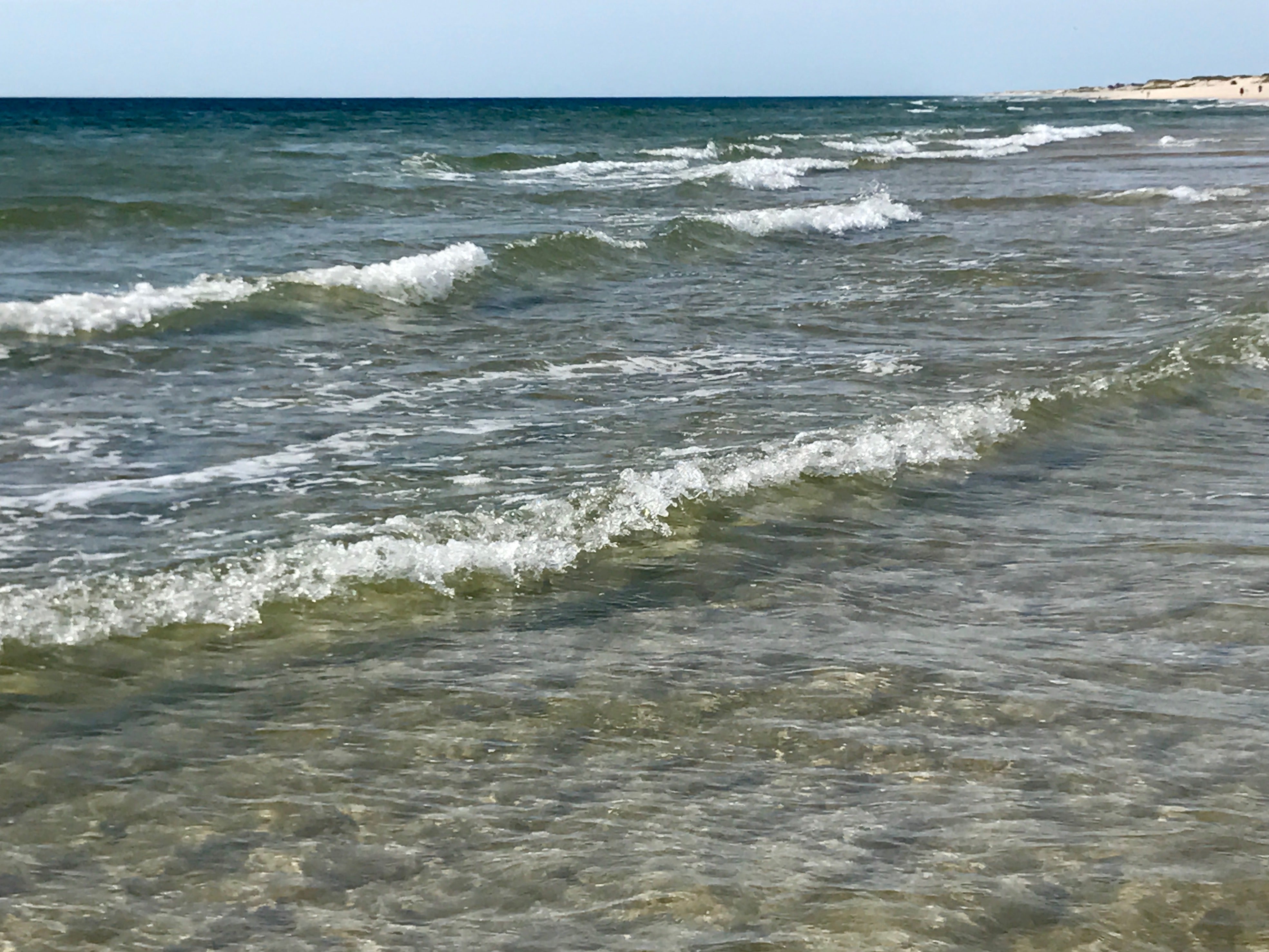N.J. ocean temperatures are finally becoming warmer

The ocean off South Seaside Park on June 29, 2017. (Photo: Justin Auciello/for NewsWorks)
After mostly below normal ocean temperatures since Memorial Day weekend, New Jersey swimmers are finally enjoying more comfortable conditions.
The culprit has been days of southerly and westerly winds, keeping warmer water from flowing in from offshore and allowing colder water to rise to the surface.
But temperatures are now approaching normal levels. It’s due to the wind direction, as the onshore flow since Tuesday has pushed warmer water toward the coastline.
[RELATED: Science explains changes in water temperature from beach to beach]
According to NOAA buoy data, the ocean temperature in Atlantic City is 66.7 degrees as of Thursday afternoon, which is slightly below average for early July.
Still, it’s an improvement from the weekend, when ocean temperatures along the New Jersey coastline were just around 60 degrees. It’s also an increase from the 64 degree temperature registered on Tuesday afternoon in Atlantic City.
Offshore buoys, where the water is typically warmer, are currently reporting temperatures in the lower 70s.
The fluctuation is typical during the summer, when ocean temperatures peak in the middle to upper 70s in September. Solar radiation is also a significant factor as the water warms after weeks of summer heat.
And that’s the “ideal” temperatures, one researcher says.
“Most people like it to be at least in the mid to upper 70s,” said Josh Kohut, assistant professor of Physical Oceanography at Rutgers University and founding member of the university’s Coastal Ocean Observation Lab (COOL).
But it’s different for surfers, says Tim Husar, a year-round surfer at Seaside Park and Island Beach State Park who fishes often in Ocean County.
“Definitely the mid 60s is the sweet spot. Anything higher than that, like when you get water temperatures in the 70s, means that you don’t get much of a swell,” he told NewsWorks in 2014.
————————————————————————–
NewsWorks’ Shumita Basu contributed to this report.
WHYY is your source for fact-based, in-depth journalism and information. As a nonprofit organization, we rely on financial support from readers like you. Please give today.

